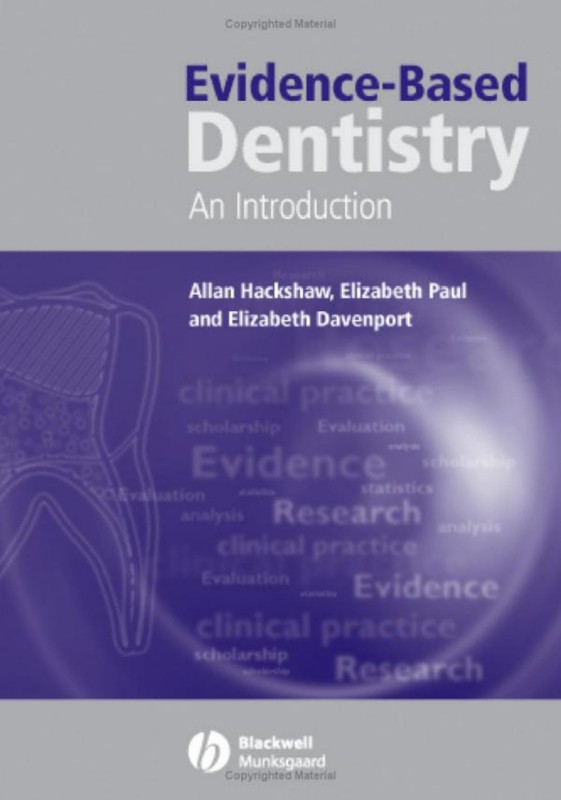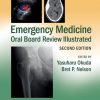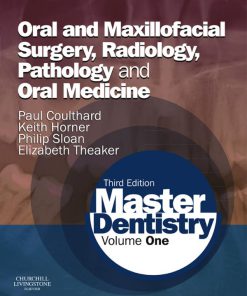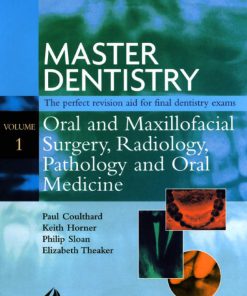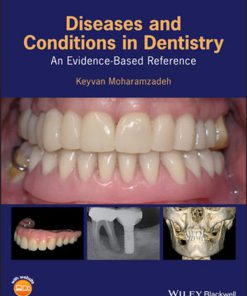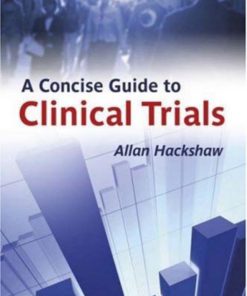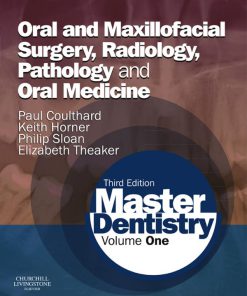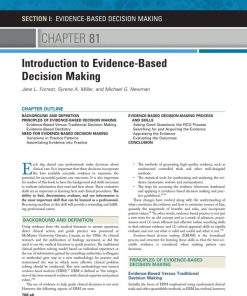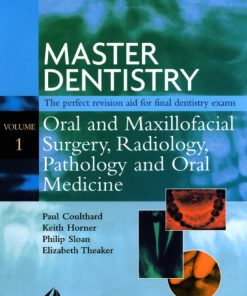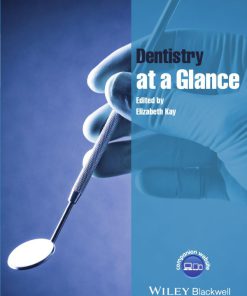Evidence based Dentistry An Introduction 1st Edition by Allan Hackshaw, Elizabeth Paul, Elizabeth Davenport ISBN 1405124966 9781405124966
$50.00 Original price was: $50.00.$25.00Current price is: $25.00.
Authors:Hackshaw, Allan K.; Paul, Elizabeth A.; Davenport, Elizabeth S. , Author sort:Hackshaw, Allan K.; Paul, Elizabeth A.; Davenport, Elizabeth S. , Published:Published:Jun 2006
Evidence-based Dentistry An Introduction 1st Edition by Allan Hackshaw, Elizabeth Paul, Elizabeth Davenport – Ebook PDF Instant Download/Delivery. 1405124966, 978-1405124966
Full download Evidence-based Dentistry An Introduction 1st Edition after payment
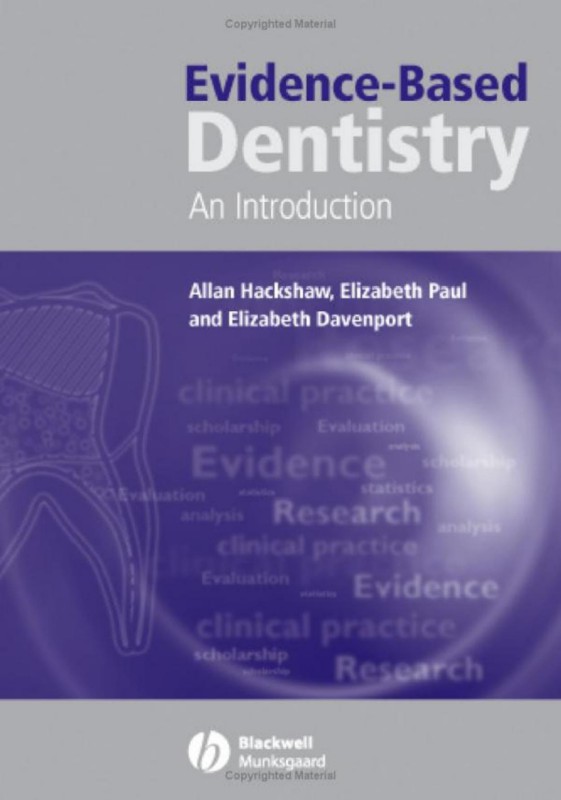
Product details:
ISBN 10: 1405124966
ISBN 13: 978-1405124966
Author: Allan Hackshaw, Elizabeth Paul, Elizabeth Davenport
This introduction to Evidence-Based Dentistry provides a much-needed orientation in the subject for students and professionals alike. It is a ground-level book for those seeking to understand evidence-based dentistry and its significance for clinical practice. The book is anchored in the dental literature: the majority of the chapters offer guidance on interpreting a full published paper; where both the subject of the paper and the study design is of relevance to the field of dentistry.
Each chapter is organised in a similar way, providing a structured approach to reading and understanding research articles or commercial product information. In this respect, Evidence-Based Dentistry is designed as an introduction to understanding published research and its implications for the dental surgery; rather than as a guide on undertaking research.
- Incorporates topical published papers in order to rpovide worked example
- Explains the most6 common forms of research used in dentistry
- Unlocks basic statistical and epidemiological concepts, along with key terms
- Enables the reader to identify the research question, assess aspects of study design, evaluate the strengths and weaknesses of papers and understand their clinical relevance
- Tables, boxes and figures are used extensively to present core information. Useful templates are also provided, which readers may use/adapt for analysis, including study clubs.
Evidence-based Dentistry An Introduction 1st Table of contents:
-
Evidence-based dentistry: what it is and how to practice it
- What is evidence-based dentistry?
- Why do we need evidence-based dentistry?
- How to practice evidence-based dentistry
-
Counting people: understanding percentages and proportions
- What is the aim of the study?
- How was the study conducted?
- What are the main results?
- The implications of conducting a study based on a sample of people
- How good is the evidence?
- What does the study contribute to dental practice?
-
Taking measurements on people
- What is the aim of the study?
- How was the study conducted?
- What are the main results?
- Normal distribution
- Interpreting the results from non-symmetric data
-
Comparing groups of people and examining associations
- Comparing two percentages (or proportions)
- Comparing two means
- Examining associations
-
Assessing the effectiveness of treatments
- Main design elements of randomised clinical trials
- A clinical trial based on counting people
- A clinical trial based on taking measurements on people
- Appendix I: Guidelines for the appraisal of a clinical trial
-
Determining risk factors for and causes of disease
- Association, causality and confounding
- Cohort studies
- An example of a cohort study
- Case–control studies
- An example of a case–control study
- Appendix I: Guidelines for the appraisal of an observational study
- Appendix II: Calculation of odds, risk, odds ratio and relative risk
-
Detecting disease
- Conditions for a worthwhile screening programme
-
Study design issues
- Types of study
- Selecting the sample
- Sample size
- More observational studies
- Bias
- Confounding
- More on clinical trials
- What is the strength of evidence for causality from different study types?
-
Reviewing all the evidence
- Searching for information
- Conflicts of interests in published research
- Systematic reviews
-
Summary of statistical concepts
-
Suggested answers
-
Further reading
People also search for Evidence-based Dentistry An Introduction 1st:
components of evidence based dentistry
steps of evidence based dentistry
importance of evidence based dentistry
levels of evidence based dentistry
centre for evidence based dentistry
You may also like…
eBook PDF
a Concise guide to Clinical Trials 1st Edition by Allan Hackshaw ISBN 1405167742 9781405167741

